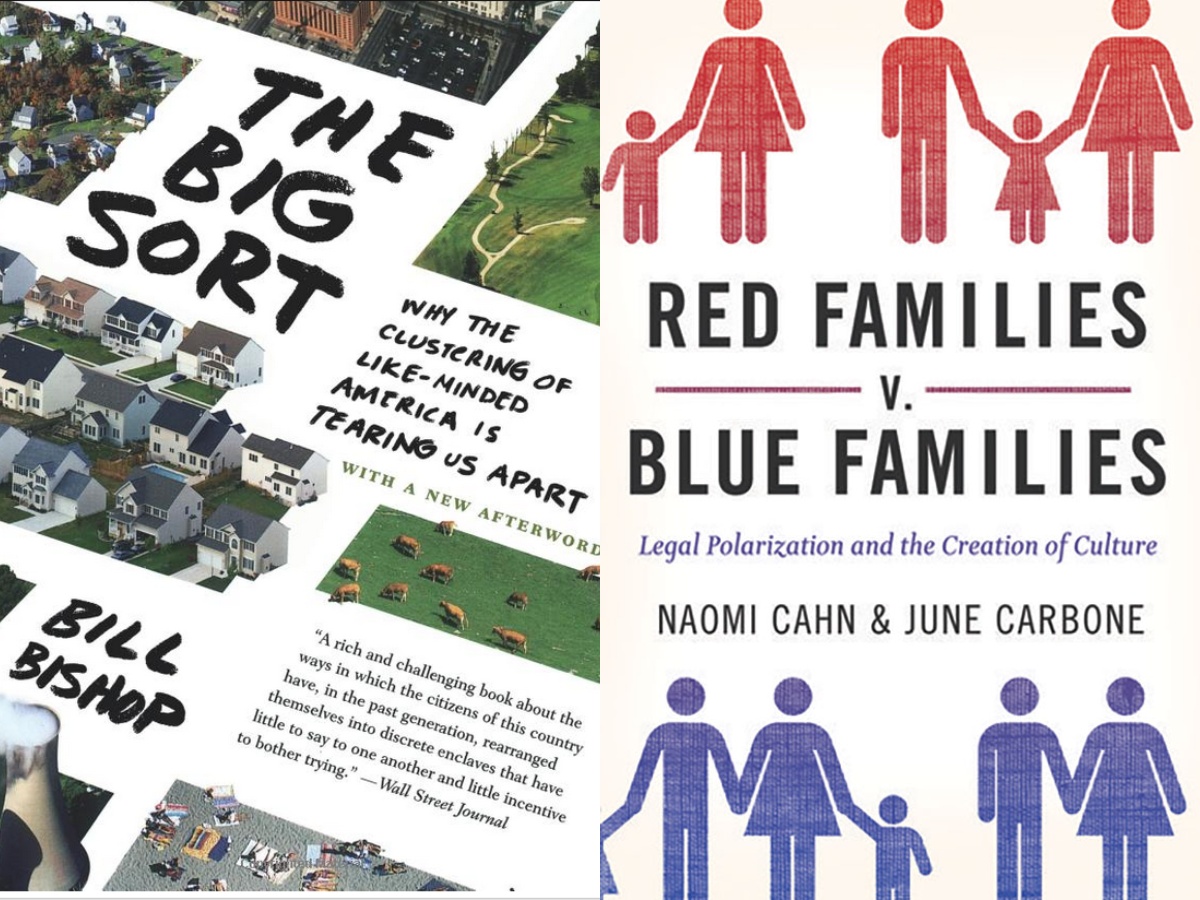The Ironies of Blue-Family Values
- Post by: Bryce J. Christensen
- September 12, 2010
The Big Sort: Why the Clustering of Like-Minded America is Tearing Us Apart Bill BishopHoughton Mifflin, 2008; 384 pages, $25.00 Red Families v. Blue Families: Legal Polarization and the Creation of Culture Naomi Cahn and June CarboneOxford University Press, 2010; 288 pages, $29.95 When Mexican poet Octavio Paz went to Spain in 1937 to show his solidarity with the Republican Cause in the Spanish Civil War, he visited a segment of the front that was so close to the Nationalist lines that he could hear the enemy soldiers talking. Years later, Paz recalled the shock of realizing that the enemy, too, spoke with a human voice. That shock—a shock that can help to check the most brutal impulses in dealing with a foe—is one experienced by fewer and fewer Americans now engaged in the culture wars that now sharply divide America. Not so very long ago most Americans lived in communities characterized by notable diversity in political views. As Bill Bishop points out in his provocative book, The Big Sort, as recently as the 1970s, “Americans were . . . likely to live, work or worship with people who supported a different political party.” But things have changed. “Over the past thirty years,” Bishop remarks, “the United States has been sorting itself, sifting at the most microscopic levels of society, as people have packed children, CDs, and the family hound and moved.” Increasingly, Americans have moved based on “choices about who their neighbors will be and who will share their new lives.” The consequence has been that Americans “have clustered in communities of sameness, among people with similar ways of life, beliefs, and, in the end, politics.” In explaining this troubling socio-political phenomenon, Bishop identifies—with not entirely convincing precision—1965 as the pivotal year when “the old systems of order—around land, family, class, tradition, and religious denomination—gave way. They were repl
Categories:

